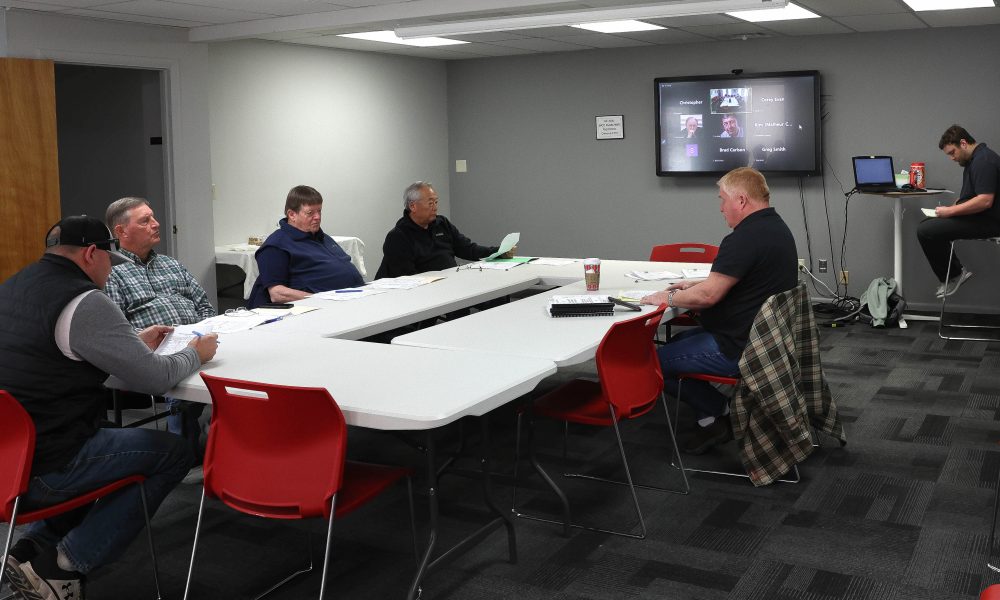Malheur County, we have a mess to clean up, left behind by Greg Smith without apology. Pulling together, we can make something yet of the Treasure Valley Reload Center. The task won’t be easy and it will be costly but opportunity can be salvaged from this train wreck of a project.
Many in the community will rightfully ask: Why?
The public has sunk more than $25 million into this and it’s not done. By the time it’s over, the price tag will be about $40 million. Smith and his team have left us with a half-built house. The choice is to mothball the work and watch the rust take hold or to figure a way to finish it – and then hold Smith accountable down the road.
The immediate task: Get this train running again.
A crucial first step is restoring integrity and credibility. The people at the Malheur County Development Corp. must lead the way. The directors have to stop with the pompoms and pick up the pencils. This project doesn’t suffer from poor public relations. It suffers from poor oversight, surrendered to a carpetbagger from Heppner.
So, let’s start with the board being brutally honest – with themselves, with county and state officials, with their vendors and with the community. Tell the truth. The directors ought not try to spray perfume on rot. This is essential. If people don’t trust them, this project will be dead.
What’s your opinion?
Share what you think should happen next. Send a letter to the editor to [email protected]. Let Malheur County know your thoughts.
Here’s what should happen to get train cars rolling out of Nyssa.
• No. 1 – Make the right ask.
As we’ve been saying for months, local officials should suck up the courage to ask the Legislature for every dime needed to finish this. Instead, they have hemmed and hawed, pushed numbers around, whittled away at assets and hoped for the best.
That’s wrong. Figure out the true cost – and that includes fully equipping the building and putting in a decent road system. Don’t leave this looking like something funded by a bake sale. Plan for what’s needed, what can be justified. That means asking for at least $8.5 million.
• No. 2 – Build a local coalition.
This ask can’t be just the Malheur County Court writing a pleading, hat-in-hand request to the Legislature. That’s going to be a dead letter. The court’s ineffective supervision of its public company in the past five years has damaged its credibility. Other voices need to vouch for why the Legislature should act.
Those legislators are more likely to heed a message from a united Malheur County front. Someone needs to assemble that coalition to include every Chamber of Commerce, every agriculture group from the Malheur County Farm Bureau to the onions growers, every community leader of substance and integrity. City councils, the Eastern Oregon Border Board, Treasure Valley Community College and every school board should be asked to sign on. Imagine the persuasive power of a deep and well-prepared group representing Malheur County’s interests making the case for one final state grant.
• No. 3 – Pay the bills. Malheur County should step in with cash to help in crucial ways. That means paying contractors what they are owed – now. A reputation as a deadbeat helps no one. Then the county should take over financing the project. Currently, the development team borrows from a bank and the county pays the interest. The county has $10 million or so that came in unexpected. Use that – lend the money and get the interest back for the county instead of an out-of-town bank. And then be sure the next construction tasks are funded before they start. That means putting in the money to build the road needed before warehouse construction can start. Put in the money so the fourth rail spur doesn’t become an unfinished stub. The county can get back those funds if and when that new state grant comes through.
• No. 4 – Get the industry to pay. So far, the onion industry that will profit hasn’t invested. Treasure Valley Onion Shippers, a consortium, should step in to pledge $1 million for the project. That can be raised by assessing the 13 to 16 onion shippers who will use Nyssa a share of that $1 million based on their committed volume. Imagine the message that buy-in would send to legislators and Gov. Tina Kotek. But it also is the right move by the industry. Standing by, hands in pocket, doesn’t cut it.
• No. 5 – Power up the board. Two seats are open on the board of Malheur County Development Corp. The days of cronyism are over. The Malheur County Court should do its job, opening applications, and searching the county for two trusted, experienced leaders. We need directors who can read budgets. Indeed, we need directors who will insist on budgets. The court should not defer this duty yet again to the onion industry. We need Malheur County experts, not industry promoters.
None of this will – or should – work unless the Malheur County Court and the directors of the development company snap to attention. They have a big job just to gain the trust of state officials, vendors and the community. They squandered that trust with their look-the-other-way response as problems emerged.
This all hinges on Salem. Thinking small is not going to bring $8.5 million or so to Malheur County.
The negligence and incompetence that got us here can’t be shrugged away. But that’s a secondary job and we’ll address that one in a coming editorial.
The first priority is to do what Greg Smith couldn’t – finish this project. – LZ



